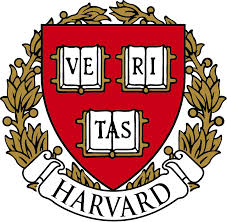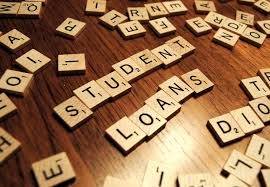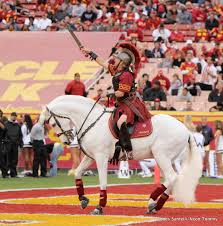Private Schools That Offer the Best Financial Aid
One of the most important questions you'll have to ask yourself during the college selection process is whether or not your top-choice school is affordable for your family. Affordability has a huge impact on college decisions. Some students will luck out and be offered a nice scholarship by their school that will make things affordable; others will win independent scholarships. Usually, though, both of these options for financing your education are based on merit, and there is a lot of competition. But did you know that some schools are committed to making sure all admitted students can afford to attend, regardless of whether they are scholarship recipients? Read on to see a list of colleges that meet full need, or provide for 100% of their students' demonstrated financial need. Part of the application process is filling out a multitude of forms that colleges use to determine how much your family can reasonably afford to pay. The two most common forms are the FAFSA (Free Application for Federal Student Aid) and the CSS Profile (College Scholarship Service Profile). Other schools might have their own forms that they ask you to fill out. On these forms, you'll have to state your parents' income and assets (as well as your own, if you have any) and the number of dependents in your household. The government and colleges then run some calculations to decide what's reasonable for your family to contribute to the cost of your education. Of course, this plan is not foolproof for getting the money you need for college. First of all, many families feel that the government and colleges do not do a very good job of determining how much they are actually able to pay. The calculations can be different from school to school, and just because an outside arbiter has decided that your family can "afford," say, $15,000 per year, that doesn't mean you can! Many families feel they are in a difficult situation because their incomes are too high for the larger pools of financial aid but too low to be comfortable giving up such a large chunk of money. Of course, the situation is even worse for those who are planning on sending multiple kids to college. Additionally, demonstrating financial need doesn't necessarily mean you'll get financial aid—or at least as much as you need. Many schools simply cannot afford to give away as much aid as what their students need. They instead give some money, but not enough to cover the cost. For example, let's say your school costs $54,000 per year. You've been told that your family can afford to pay $20,000 per year—but in reality, that's a stretch. That leaves you $34,000 short of full tuition. Your school offers to kick in $15,000. So you're left with a gap of $19,000 in addition to the $20,000 you couldn't really afford in the first place. This is why so many students are left with no option but to take out huge private student loans, often leaving them riddled with massive debt for years after graduation. Fortunately, there are some schools out there that are committed to staying affordable for all their students; however, institutions that pledge to meet 100% of their students' financial need are a relatively rare breed. The schools on the lists below make sure that you get the money you need (outside your family's calculated contribution, of course) through a combination of grants, loans, work study, and/or scholarships. Some have taken this generosity one step further and pledged that they will meet the full financial need of their students without requiring them to take out loans. For the top schools listed below, financial aid comes 100% in the form of grants, scholarships, and work study. Grants and scholarships are financial gifts that do not need to be paid back. Work study means that these schools guarantee you will be given a job that will cover some of your costs. However, some of the schools listed below will also include loans as part of their financial aid packages. When a school considers your FAFSA and your aid package, they also determine your eligibility for federal loan programs. These loans need to be repaid, but if they are granted through your school, they will count as part of your "100% financial aid program." The most common federal loans you will hear about for financial aid packages are as follows: These loans are usually much better than private student loans because they tend to have lower interest rates, grace periods, convenient repayment plans, and loan forgiveness programs. Unfortunately, there are limits to the amount a student can borrow every year through federal loan programs. As a result, some students will additionally be offered loans through their school. Though the rates on these loans are not usually quite as low-interest as federal loans, they tend to have lower interest rates than other private loans. The other big difference between schools that include loans as part of their 100% need-met financial aid programs and schools that leave a portion of your needs unmet and require you to find your own loans is that you qualify automatically for these loans if they are offered as part of your financial aid package. Receiving the loans is as easy as checking a box on your financial aid statement. As you are looking over the lists below, you might start to notice a pattern. Most of these schools are well known for being excellent in their fields. It's usually the top schools that are committed to and able to meet 100% of their students' financial needs. There are a few reasons for this. The first is that, traditionally, these schools are attended by wealthier students. When many students are paying full price, and some even have family members making financial donations to the school, these schools will have more money to spread around to students who are not as well off financially. Many of these schools also have larger endowments than the average university, which means there is more money to give to students who need it. Finally, meeting 100% of students' financial needs has become a selling point for top schools that are competing for top students. Once one school started having this policy, others had to match it to stay competitive and continue being attractive to the best students. The bottom line is that you can attend a top school and have it be affordable. Higher education costs in the United States have been skyrocketing for the last 20 years, but it's still possible to get a great education without breaking the bank. Learn how you can maximize the quality of your college education while minimizing costs with our six-hour online course. The following schools have the most generous financial aid packets. They are willing to meet 100% of your demonstrated financial need without making you take out loans, regardless of your family income. To illustrate what this means, let's imagine two students going through the financial aid process. Student A's parents make $130,000 per year but have a couple of children currently attending college. After looking at their FAFSA, the schools below decide Student A's parents can make a contribution of $30,000 per year toward average yearly fees of $50,000. Student A would thus get the remaining $20,000 per year in financial aid through scholarships, grants, and work study. Student B's parents, on the other hand, make just under $50,000 per year. After looking at their FAFSA, the schools below decide Student B's family should not have to contribute financially. Student B is awarded the full $50,000 through scholarships, grants, and work study. All information below is taken from US News. Now, let's look at these crème de la crème schools: These schools will meet 100% of your financial need no matter what your family's income is, but if your income is below a certain level, they'll also make sure you don't have to take out loans. Let's consider Student A and Student B again to illustrate this. Student A's parents can contribute $30,000 per year toward the $50,000 cost of tuition and living. To meet the $20,000 of need, Student A is offered $3,500 in Subsidized Stafford Loans and $2,000 in Unsubsidized Loans, while the parents are offered a PLUS Loan of $2,500. Student A is then offered the final $12,000 through a combination of scholarships, grants, and work study. Student B's parents make less than $50,000. Almost all the schools listed below require no financial contribution from Student B's parents. Student B is offered the full $50,000 yearly cost through scholarships, grants, and work study. Below are the schools that offer this kind of aid. Though these financial aid packets won't seem as great compared with the non-loan ones above, the fact that these schools commit to meeting 100% of students' demonstrated financial need is a rare thing. These schools expect students to take out some loans as part of their financial aid packages but will make sure that there are no gaps between what the aid package is worth and the cost of tuition. Let's go back to our fictional students for a moment. Student A's parents who earn $130,000 are expected to contribute $30,000 per year toward the $50,000 cost of attendance. Student A is awarded $3,500 in Subsidized Stafford Loans, $2,000 in Unsubsidized Stafford Loans, and a $3,500 loan directly from the school. Student A's parents are also offered a $7,000 PLUS Loan. Finally, student A gets the opportunity to earn $2,000 per year in work study and receives a grant for $2,000. By contrast, student B's parents make less than $50,000 and are not expected to contribute anything up front. Student B is awarded $3,500 in Subsidized Stafford Loans, $2,000 in Unsubsidized Stafford Loans, and a $10,000 loan directly from the school. Student B is also offered $3,500 in work study. Student B's parents get a PLUS loan of $10,000. The final $21,000 is awarded through grants and scholarships. Schools who offer students 100% needs met (with loans) financial aid include the following: The biggest thing that you can take away from this list is the knowledge that top colleges in the US are working hard to be affordable to all students. If you decide to apply to one of the schools listed above, you can do so with the confidence that you will neither have to come up with the money to finance it up front nor hunt down your own private student loans. And if you don't see your top choice on this list, don't be discouraged. More and more schools are working toward being able to cover 100% of their students' financial needs. Many of the schools that aren't there yet still have great financial aid packages. Even better, many of them offer merit-based scholarships that you might be eligible for. Also, keep in mind that you should always be on the lookout for outside, private scholarships to help fund your tuition. Now that you know which colleges offer 100% financial aid, how do you go about applying for it? Our simple guide on how to apply for financial aid will guide you through the process. Looking for scholarships to cover the cost of your college education? Learn how to get a full-ride scholarship and which colleges offer them. The government can sometimes help with tuition costs, especially if you're from a low-income family. Check out our article to see whether you are eligible for a Pell Grant. As you consider where to apply to college, you might want to look at our list of cheap out-of-state colleges and the most expensive colleges in the country. Don't be surprised by all the costs of college! Read this article to see what college really costs. Want to improve your SAT score by 160 points or your ACT score by 4 points? We've written a guide for each test about the top 5 strategies you must be using to have a shot at improving your score. Download it for free now: 
What Does Demonstrated Financial Need Mean?

100% Meet Need Schools
What Does This Financial Aid Look Like?


What Kinds of Schools Meet 100% of Need?

The Best of the Best: 100% Need Met Without Loans, Regardless of Income
 Harvard has one of the best financial aid programs out there.
Harvard has one of the best financial aid programs out there.
Second Best: 100% of Need Met With No Loans for Some Incomes
 Dartmouth is one of the schools that offers loan-free aid to some students.
Dartmouth is one of the schools that offers loan-free aid to some students.
School Financial Aid Notes Colgate University Aid is loan-free if your parents' total income is less than $150,000. Cornell University Aid is loan-free if your parents' total income is less than $60,000 and total assets are less than $100,000. Dartmouth College Aid is loan-free if your parents earn less than $65,000. Your family will not be expected to make any financial contribution. Duke University Aid is loan-free if your parents earn less than $60,000. Your family will not be expected to make any financial contribution. Haverford College Aid is loan-free if your parents earn less than $60,000. Families making more than this threshold can expect small loans ranging from $1,500 to $3,000 a year. Lafayette College Aid is often loan-free if your parents earn less than $50,000. Lehigh University 90% of undergraduate families with an income less than $75,000 received grants and scholarships in an amount greater than the full cost of tuition. Rice University Aid is loan-free if your parents earn less than $130,000. Students whose parents make less than $65,000 will receive coverage for tuition, fees, room, and board, whereas those whose parents make between $65,001 and $130,000 will receive full coverage for tuition only. Tufts University Aid is "typically" loan-free for students with total family incomes of less than $60,000. All other students qualifying for financial aid can expect to have a maximum of $7,000 in loans per year. University of North Carolina at Chapel Hill Low-income North Carolina students may qualify for aid without loans through the Carolina Covenant. Vassar College Aid is loan-free for students from "low-income families." Washington University in St. Louis Aid is loan-free if your parents earn less than $75,000. Wellesley College Aid is loan-free if your calculated family contribution is less than $7,000 and your parents earn less than $60,000. All other students qualifying for financial aid can expect to have a maximum of $15,200 in loans over four years. Wesleyan University "Domestic students from families who earn less than $120,000 (with typical assets) are offered a financial aid package with an additional $3,500 for freshmen, $4,500 for sophomores, $5,500 for juniors, and $5,500 for seniors in Wesleyan scholarship that replaces the standard loan package." Williams College Aid is loan-free if parents earn less than $75,000 with "typical assets." For everyone else, loans are capped at $4,000 per academic year. 
100% of Need With Loans
 USC is one school that meets 100% of financial need with loans.
USC is one school that meets 100% of financial need with loans.
Final Thoughts: Colleges Offering 100% Aid
What's Next?



About the Author
Mary Ann holds a BA in Classics and Russian from the University of Notre Dame, and an MA from University College London. She has years of tutoring experience and is also passionate about travel and learning languages.
Private Schools That Offer the Best Financial Aid
Source: https://blog.prepscholar.com/colleges-that-offer-complete-financial-aid
0 Response to "Private Schools That Offer the Best Financial Aid"
Post a Comment